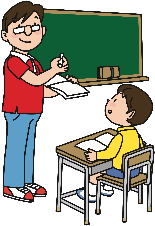Verbs
 VERBS (คำกริยา)
VERBS (คำกริยา)
Most verbs are action words. They tell you what people or animals are doing (walk, swim, read). They also describe an occurrence or a state of being.
1: VERB TO BE (IS/AM/ARE/WAS/WERE)
A. THE VERB TO BE: PRESENT TENSE (AFFIRMATIVE)
He is a student.
She is a cook.
It is a brown dog.
I am eight years old.
You are young.
We are singing.
They are playing.
Read the FLASHCARDS first.
- Choose is, am or are 01


- Choose is, am or are 01


- Choose is, am or are 02


- Choose is, am or are 02


- Choose is or are
- Choose “There is” or “There are” 01
- Choose “There is” or “There are” 02
B. THE VERB TO BE: PRESENT CONTINUOUS TENSE
C. THE VERB TO BE: PRESENT TENSE (NEGATIVE FORM)
D. THE VERB TO BE: PRESENT TENSE (QUESTION FORM)
E. THE VERB TO BE: PAST TENSE (AFFIRMATIVE)
F. THE VERB TO BE: PAST TENSE (NEGATIVE FORM)
- Change to negative: wasn’t or weren’t 01

- Change to negative: wasn’t or weren’t 01

- Change to negative: was not or were not 01

- Change to negative: was not or were not 01

G. THE VERB TO BE: PAST TENSE (QUESTION FORM)
4B: VERB TO HAVE (HAS/HAVE/HAD)
Use has with he, she, it, and with singular nouns. Use have with I, you, we, they, and with plural nouns.
- Choose have/has



- Choose have/has



- Choose Have/Has/Had
- Fill in the blanks: Contractions
4C: VERB TO DO (DO/DOES/DID)
Use do with I, we, you and they, and with plural nouns(my friends, Scott and Andy). Use does with he, she and it, and with singular nouns (my father, the teacher).
- Question (do/does)

- Question (do/does)

- Choose Do/Does/Did
- Negative (do/does +not) 1
- Negative (do/does +not) 02
- What can you do? 01
- Fill in the blanks: Contractions
4D: ACTION VERBS
PRESENT CONTINUOUS
MATCHING ACTION VERBS WITH NOUNS

